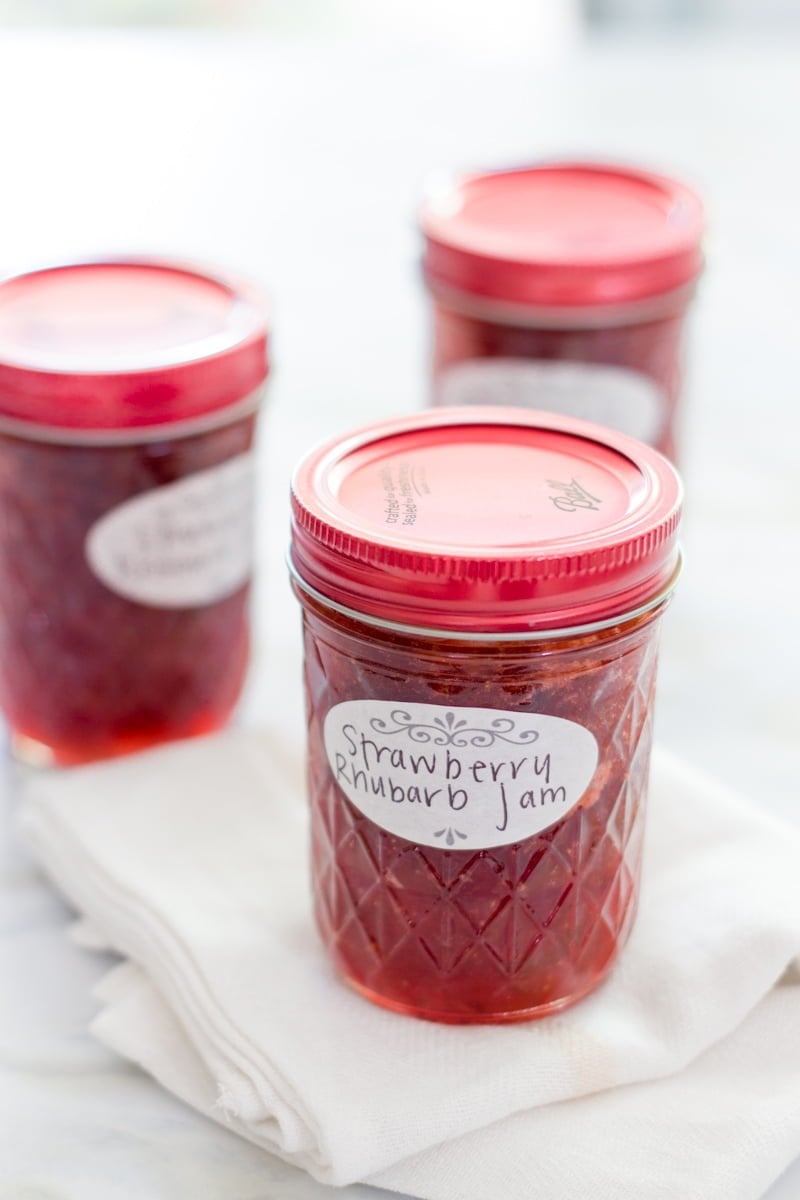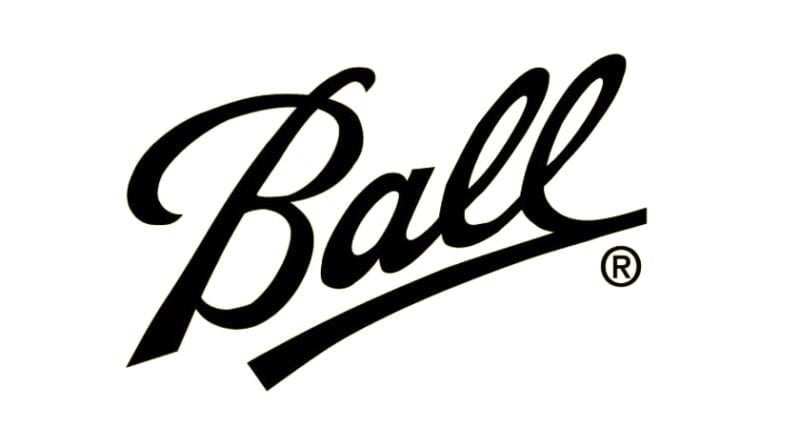This strawberry-rhubarb jam is pretty much life-changing. It’s sweet, tangy, fruity. I know some people love the smooth, clear results you get with making jelly, but this jam is packed full of rhubarb chunks and strawberry pieces. I love that you can actually see the fruit when you spread it onto an English muffin. This strawberry-rhubarb jam makes my breakfast happy. This jam is my jam (yup, I went there).
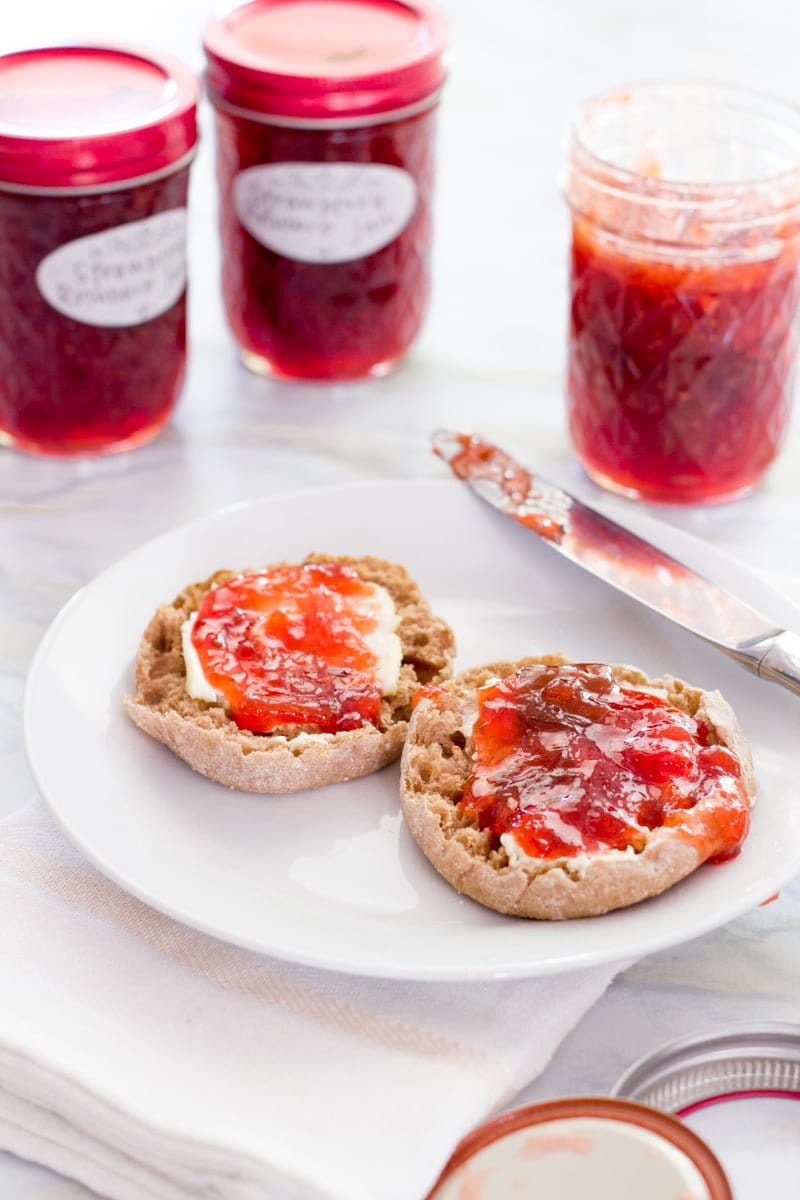
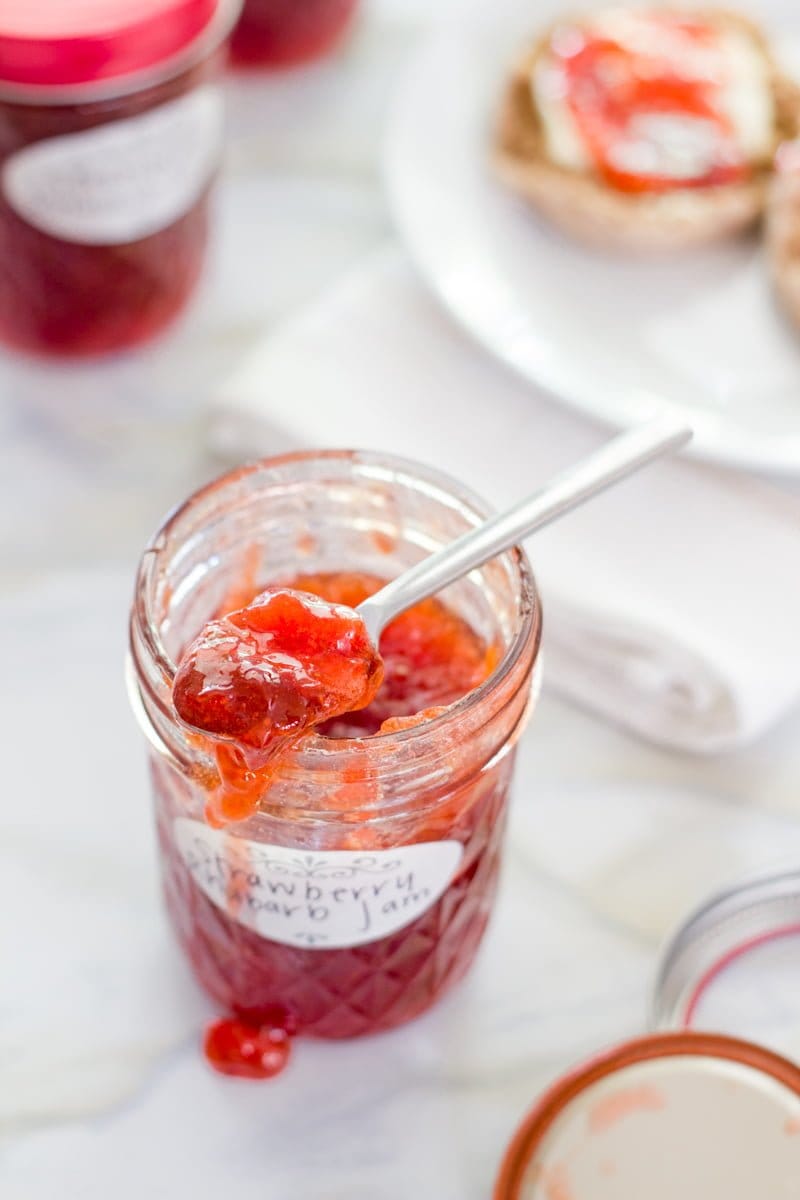
Ingredients for Strawberry Rhubarb Jam
Pectin
Pectin sounds complicated, but it’s a breeze to use (it’s just a powder that you stir into the fruit to help it thicken and gel). It’s also all-natural—it’s a compound that already exists in most fruits, but strawberries need a little help to get thick enough to become jam. I promise you won’t mess it up! And the results will be delicious.
The Fruit
I’ve talked a lot about strawberries lately, but haven’t done a lot of talking about rhubarb! We grow our own rhubarb (are you surprised?) and just freeze it in 1-inch chunks as it comes off. That way, when it’s time to make a cobbler or jam, we just measure out what we need and are good to go.
Lemon Juice
For safety, only use bottled lemon juice for canning. Fresh lemons are acidic, but don’t have a consistent pH between them. Bottled lemon juice has a regulated acidity level, and will ensure your jam is safe.
Sugar
It is very important to stick to a tested, reliable recipe for canning. You cannot safely reduce the amount of sugar in this jam and water bath can it. Look for a tested canning recipe for a low-sugar jam if you’d like a reduced sugar alternative.
Want more easy canning recipes like this one?
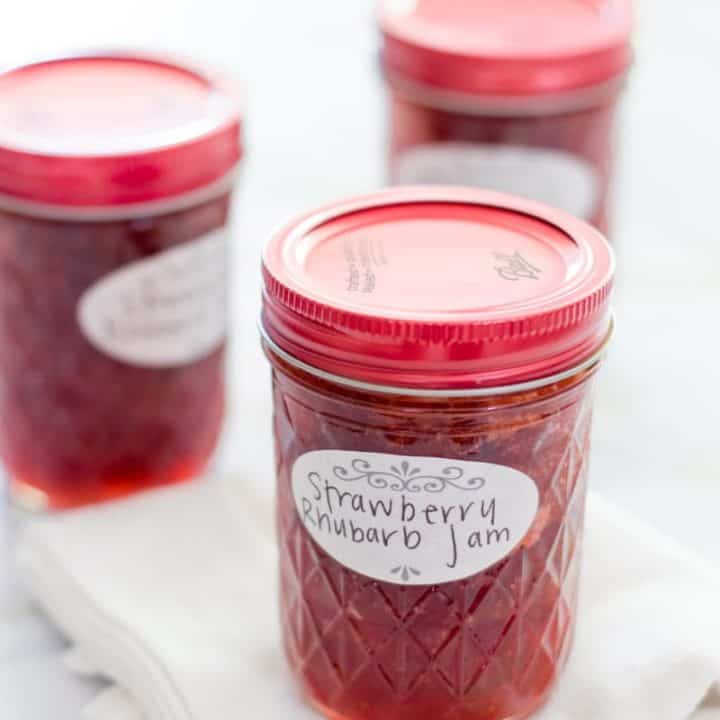
Strawberry-Rhubarb Jam
The classic early summer flavor combo is pulled together beautifully in this recipe for Strawberry-Rhubarb Jam from the Ball Blue Book Guide to Preserving. It's a great recipe to start canning with!
Ingredients
- 2 cups crushed strawberries (about 1 1/2 to 2 pounds)
- 2 cups chopped rhubarb (about 3 to 6 stalks)
- 6 tablespoons Ball Classic Pectin
- 1/4 cup lemon juice, fresh or bottled
- 5 1/2 cups sugar
Instructions
- Prepare boiling water canner. Heat jars in simmering water until ready for use. Do not boil. Wash lids in warm soapy water and set bands aside.
- Combine strawberries, rhubarb, pectin, and lemon juice in a large saucepan, stirring to blend in pectin. Bring mixture to a boil over medium-high heat. Add sugar, stirring until sugar dissolves.
- Return mixture to a rolling boil that cannot be stirred down. Boil hard for 1 minute, stirring constantly. Remove from heat. Skim off foam, if necessary.
- Ladle hot jam into a hot jar, leaving 1/4-inch headpsace. Remove air bubbles. Clean jar rim. Center lid on jar and adjust band to fingertip-tight.
- Place jar on a rack in a boiling-water canner. Repeat until all jars are filled. Water must cover jars by at least 1-inch before processing.
- Bring water to a full rolling boil over medium-high heat. Cover canner, and process jars for 10 minutes (time starts when full boil begins).
- Turn off heat, remove cover, and let jars cool in the water for five minutes. Then, remove the jars from the canner, and place on a towel on the counter to cool completely—do not retighten any bans that have loosened.
- Cool 12 hours. Check lids for seal after 24 hours. Lid should not flex up and down when center is pressed. Label and store jars. Any jars that have not sealed should be stored in the fridge and eaten within a week.
Notes
New to canning? Make sure to check out this great step-by-step guide to learn more about how to get started.
Nutrition Information:
Yield: 48 Serving Size: 2 tablespoonsAmount Per Serving: Calories: 96Total Fat: 0gSaturated Fat: 0gTrans Fat: 0gUnsaturated Fat: 0gCholesterol: 0mgSodium: 3mgCarbohydrates: 25gFiber: 0gSugar: 23gProtein: 0g
At Wholefully, we believe that good nutrition is about much more than just the numbers on the nutrition facts panel. Please use the above information as only a small part of what helps you decide what foods are nourishing for you.

